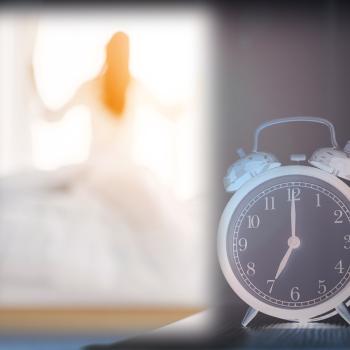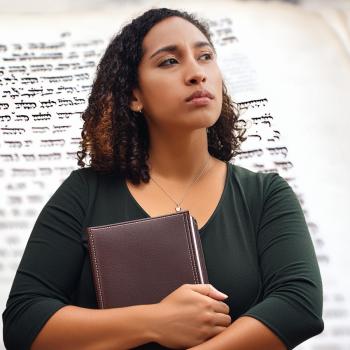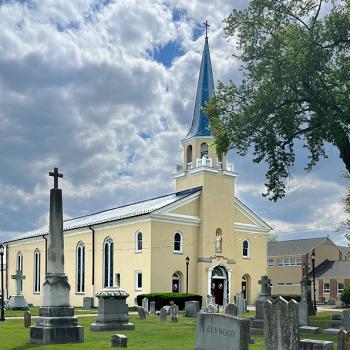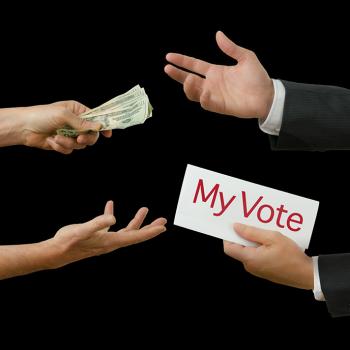
“The doors of the church are still open.”
The media will soon forget the horror of the June 17, 2015 murders of nine good people at Mother Emanuel, the African Methodist Episcopal Church in Charleston, South Carolina. The next big tragedy or scandal will grab headline space.
But the people will not forget. Not the people of Charleston, not the families and friends of the ruthlessly murdered, not the African-American community.
Every time I think about it, I have two reactions: deep sorrow and huge anger against a society that teaches people like the young, white man who allegedly committed the murders that it is OK and even right to hate and kill those who differ from him.
After my sorrow and anger I have to face fear. Fear of the kind of backlash that could lead to more racial tension, more murders. Fear of copycats who want their moment of fame and are bred on the same hatred. Fear for what I, as a white woman reared in the south with a significant amount of privilege, may have done over the years to enhance racism rather than being a healing force.
Then I learn that Rev. Mason Rice, Jr, Pastor of the St. James AME Church in Denton, courageously invited the community to join him and his congregation this past Monday night for a time of prayer.
It is courageous because it is an open invitation. It didn’t say, “Blacks only.”
It is courageous because any black church could easily shut its doors to strangers in the name of safety.
It is courageous because they proclaimed with full heart and voice, “The doors of the church are still open.”
I go because it is the right thing to do. I sense that I have no right to be there. I know only from a distance the kind of suffering that systematic racism brings.
Sure, I’ve fought multiple battles to see women affirmed as fully human in one of the last institutions that can freely discriminate against women, namely the church. I have paid a big price for getting on the front lines of those battles. I’ve lost friends, opportunities, jobs, career trajectories, emotional and social acceptance and security by standing up to the good ‘ol boys clubs that make up the heart of most Christian leadership.
So I can empathize. To a point.
But I still started from privilege. Let’s put it this way: if life were a hundred yard dash, I only had to start ten to twenty feet behind the starting gate. But so many of my black contemporaries started fifty, sixty, a hundred yards back. And while I had to compete carrying a load of fears that the white guys didn’t have (like rape and sexual harassment and being beat over the head by their particular interpretation of the Bible), I never feared that I would be killed just because of my skin color.
On Monday night, civic and church leaders, concerned citizens and church members packed the pews. Eloquent pleas and prayers to respond to hate with love and forgiveness surrounded us. We held hands and sang with full voice, “We Shall Overcome.”
I never before feared what might happen to me sitting in a church service. For the first time, I felt vulnerable. I was in the front pew. The photos of the nine beautiful people who were murdered last week lined the kneeling rails just before me, a lit candle above each one. I thought, “What is to keep evil out of here as well?”
Then together we read a litany written by Bishop Adam J. Richardson.
There was the line, repeated over and over, “The doors of the church are still open.”
Yes, despite the hate and the fear and the institutional racism that threatens once more to rip apart our nation and has destroyed good, good people, we at St. James AME proclaimed together, “The doors of the church are still open.”
St. James AME celebrates its 140th anniversary this year. It has roots in Quakertown, an historic and thriving black community once located in central Denton. It’s shameful destruction on the part of the white community was powerfully displayed in the recent documentary, “When We Were All Broncos.”
Yet despite this history, despite the hatred and discriminatory racism that has surrounded them for so long, they proclaimed boldly, “The doors of the church are still open.”
Where did this culture of hate of the others come from? I have summarized five factors here, but have a more full explanation here.
- The fear of those who are different from us is probably programmed deep into our DNA. Fear has promoted survival for most of human existence, or at least promoted survival for the group that feared the most and attacked that which was feared most effectively. The victors passed their fear genes along to us. Until we get to know “the other” on a personal, free give-and-take level, fear remains the primary emotion when encountering the unknown. It can’t be eliminated by logic.
- The smaller our boundaries, whether those boundaries are educational, social, religious, racial, financial and/or geographical, the higher the fear of the outsider. A smaller world in any area gives inadequate experience to learn the habits that welcome people outside our own known world. Almost without fail, stories of people who left tightly bounded communities will say they were taught that everyone outside their group was evil and out to destroy them.
- When tight boundaries are reinforced by political and religious leaders, there is nearly always an assumption that God’s favor rests only upon those inside. That assumption makes those on the outside disposable, even less than human. That’s what happened in Nazi Germany, who referred to Jews as rats. That is what happened in the Rwanda genocide as the Hutus called the Tutsis cockroaches. Slaves owners considered slaves as subhuman animals. Words we use for the outsider form our views of them.
- When our social and religious institutions routinely segregate us from contact with “the other,” we lower our chances of eliminating prejudice. The “other” can be anyone older or younger, smarter or less gifted academically, more athletically talented as opposed to those of us who seriously can’t walk and chew gum at the same time, the “elite” flyers or those in the crowded back of the plane, the physically fit or the girth-blessed couch potatoes, the light skinned and the dark skinned. As we segregate ourselves into our comfortable affinity groups, we don’t learn tolerance. We are reinforced in our thinking that our way is the only right way.
- The current culture of picking and choosing our news and other information only from sources that already agree with us has the unfortunate side effect of raising the hate level. Our own prejudices become solidly reinforced. They may become so reinforced that even the idea they are prejudices and not “objectively” true becomes anathema.
I offer this list as one possible starting place to address the cultural realities of our increasingly polarized and factionalized world. If each could take one step daily where we lower a barrier and see our own prejudices more clearly, we could indeed make some significant progress.
Then we could all proclaim loudly and together, “The doors of the church are still open.” Then, and only then, might we begin to find healing.
[Note: a version of this article is slated to run in the Friday, June 26, 2015 edition of the Denton Record Chronicle.]












